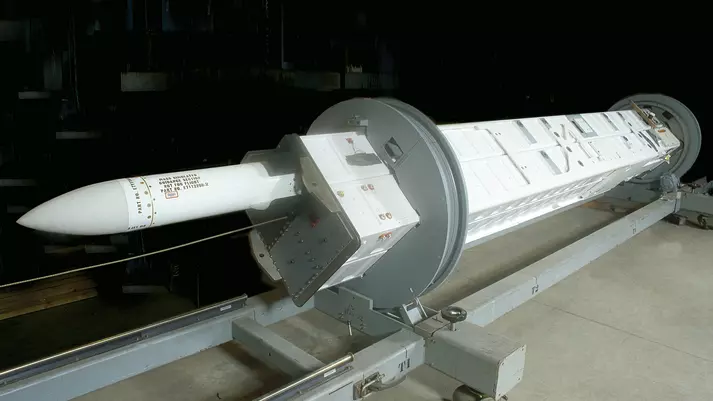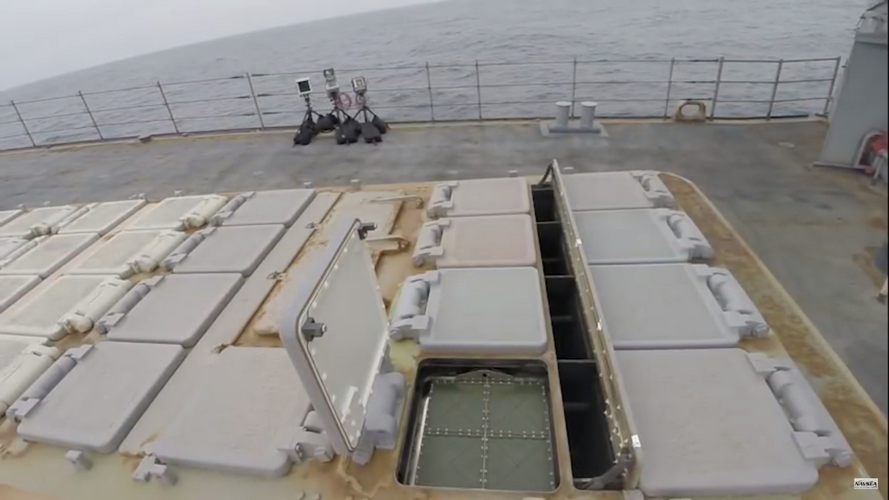I see that there is a discussion here about CAMM ER, i.e. FCM Future Common Missile. So maybe I'll write something about it. Well, the first information is that you should not get attached to the missile in the graphic. Even on this graphic it says in the lower left corner: "CAMM MR Image is for illustrative purposes only." And I take this information seriously. Well, when it was announced that such a missile would be built, information appeared that its final performance would still be the subject of talks between the Polish and British sides. This should be understood in such a way that only the initial performance was determined, the rest was still to be determined. And since the parameters of the missile were not yet determined at the time of publication of this graphic, it must also be true that the visualization of this missile is for illustrative purposes only.MR? The ER supposedly goes >20km (80%) further than the standard CAMM. MR is larger than ER, which doesn't semantically make sense I know, but is nevertheless a fact. Increase of MR over ER is 122%.
View attachment 717880
For people who know the history of the development of Polish air defense programs, the CAMM MR description contains one very characteristic feature. Well, the description shows that CAMM MR is to have a range of 100 km or more. This parameter previously appeared in the Wisła program. What is Wisła? The Wisła/Vistula is the largest river in Poland, which lent its name to the medium-range air defense purchase program. Under it, Poland will acquire 8 Patriot batteries in two tranches. As part of the first tranche, two Patriot batteries were acquired, each battery containing two fire units. These batteries still have the old radar, but they also have the IBCS system. The Polish version of Patriot is slightly different from the generally available versions, because Polish communication solutions have been added to it, and the "command wigwams" have been moved to command containers. As part of the second tranche, another 6 batteries were ordered, this time with a new 360-degree radar made in GaN technology.
From the beginning, the Polish side assumed that Polish Patriot systems would use two types of missiles, a premium missile and a low-cost LCI missile. The PAC-3 MSE plays the role of a premium missile. The Polish requirement for a low-cost Patriot missile was a cost of USD 1 million and a range equal to or exceeding 100 km. There were also other requirements for this missile, related to its seeker or its extensive Polonization. Initially, SkyCeptor was supposed to meet these parameters. However, when it came to the details, it turned out that Americans "understand the word low-cost" differently than Poles and, according to media reports, SkyCeptor was to cost about 70-80% of the cost of PAC-3 MSE. That's why the program failed. At the same time, however, the British were very keen to sell CAMM and CAMM ER missiles to Poland. According to military journalists, at this stage it was proposed that if Poland joins the CAMM missile family, it will be possible to conduct joint R&D on the LCI missile sought by Poland. Therefore, I assume that FCM is in fact the LCI missile originally expected by Poland for the Wisła program.
Oh, it is known that, just as in the case of CAMM ER, the owner of the rights to the rocket engine is the Italian side, in the case of the CAMM MR rocket engine, the owner of the rights will be the Polish side. The Polish side has technological input in the form of ~230mm and ~300mm rocket engines. Therefore, the use and possibly further development of one of these structures seems quite probable. My favorite is the ~300mm caliber also because the PAC-3 MSE missile has a 305mm caliber, and ultimately the Polish side may seek the possibility of adding FCM to the Patriot system.
And one last piece of information. There is an opinion in Poland that the missile that our anti-aircraft forces liked the most at the market analysis stage was the Barak-8 missile, among other things due to its relatively large warhead. I also once read that the British Navy wanted their versions of CAMM missiles to have larger and heavier warheads. Ultimately, nothing came of it and "interoperability" and cost cutting won, but there were such ideas. And since both Poles and the British Navy like heavier warheads than those used in CAMM and CAMM ER missiles, in my opinion it can be assumed that the CAMM MR/FCM missile will have a heavier warhead than its smaller sibling.
Last edited:





